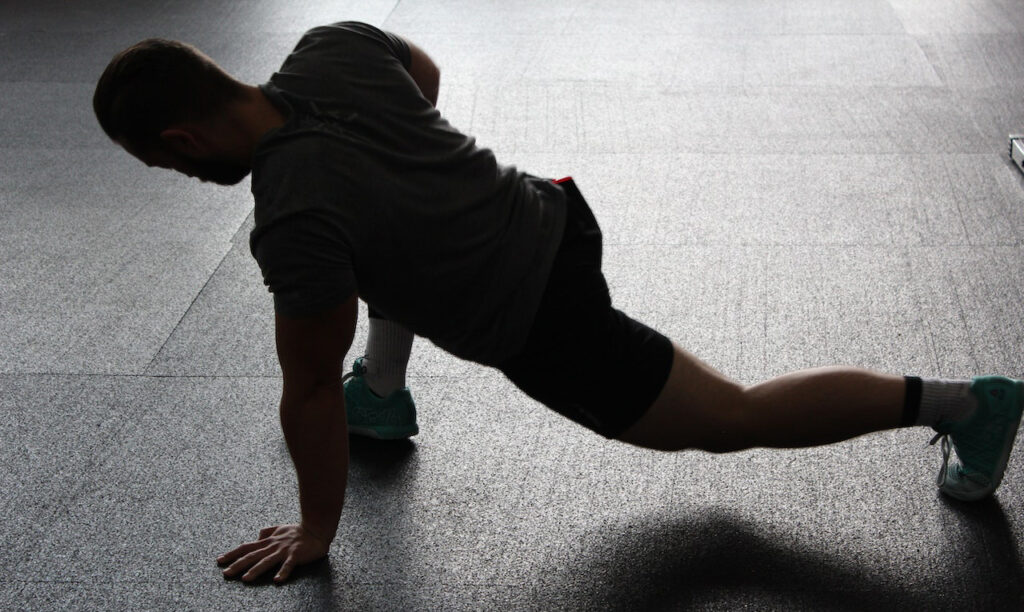Stretching gets overlooked in favor of more intense forms of exercise, but it’s an integral part of any fitness routine.
In my life, I’ve gone through many ups and downs regarding my stretching habits. Sometimes I remember to stretch daily, and sometimes I forget. When I’m regularly trying to stretch, I feel much better in body and mind and sense a degree of protection from injury and illness.
In this post, we’ll delve into the many health benefits of stretching and provide a comprehensive guide to help you get started.
What is stretching?
Before we get into the benefits of stretching, let’s first define it.
Stretching is lengthening and extending your muscles to improve flexibility and range of motion. Two main types of stretching exist: dynamic and static. Dynamic stretching is when you move your body through a range of motion, while static stretching involves holding a stretch for some time.
Both dynamic and static stretching can be beneficial for different reasons, as discussed in the next section.
What are the health benefits of stretching?
Now that we know what stretching is let’s delve into the many health benefits it can provide. These include:
- Improved flexibility: Stretching can help improve the range of motion in your joints, reducing the risk of injury and improving your performance in other physical activities.
- Better posture: Stretching can help correct imbalances in your muscles, leading to better posture and fewer aches and pains.
- Stress relief: Stretching can help to relax your muscles and reduce tension in your body, which can be a good way to unwind after a long day or relieve stress.
- Improved circulation: Stretching can help to improve blood flow and circulation, which can benefit your overall health and well-being.
- Enhanced athletic performance: Regular stretching can improve your performance in sports and other physical activities by increasing your range of motion and flexibility.
How to Stretch Safely

Stretching is generally considered safe, but it’s essential to follow proper techniques to avoid injury. Here are some things to remember to stretch safely:
- Warm up before stretching: Warm up your muscles before stretching to reduce the risk of injury. A quick walk or light jog can get your blood flowing and prepare your body for stretching.
- Don’t push too hard: Listen to your body and only stretch to the point of slight discomfort. Pushing too hard can lead to injury.
- Hold your stretches: Static stretches are most effective when held for at least 30 seconds. This allows your muscles time to relax and lengthen.
- Don’t bounce: Avoid bouncing or jerking motions when stretching, as this can lead to muscle strain.
- Stretch both sides: Stretch both sides of your body evenly to avoid imbalances.
Stretching Exercises to Try
Now that you know the basics of stretching let’s look at a few specific exercises you can try. These include:
- Hamstring stretch: Sit on the floor with a single leg out and extended and the other bent. Reach for your toes on the extended leg and hold for 30 seconds. Repeat on the other side.
- Quad stretch: Stand with one hand positioned on a wall to balance. Bend a single leg and hold your ankle with the opposite hand. Hold for 30 seconds. Repeat on the other side.
- Chest stretch: Stand with your arms behind your back and clasp your hands together. Lift your arms and lift your chest towards the ceiling. Hold for 30 seconds.
- Shoulder stretch: Interlace all fingers behind your back and lift your arms up as high as possible. Hold for 30 seconds.
- Tricep stretch: Raise one arm straight up and bend it so your hand touches your upper back. Use your other hand to push your elbow towards your head gently. Hold for 30 seconds. Repeat on the other side.
- Cat-cow stretch: Get on your hands and knees with wrists below your shoulders and your knees under your hips. Inhale and arch your back, tilting your head up towards the ceiling. Exhale and round your back, while tucking your chin towards your chest. Repeat this several times.
- Downward facing dog: Start with hands and knees on the floor with your wrists under your shoulders and your knees under your hips. Lift your hips and make your legs straight to form an inverted V shape. Spread your fingers wide and press your palms into the ground. Hold for 30 seconds.
Listen to your body and only stretch to the point of slight discomfort. If you experience pain while stretching, stop immediately and consult a healthcare professional.





